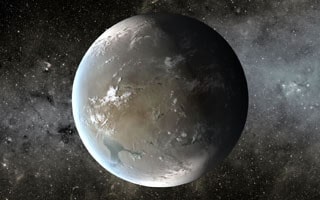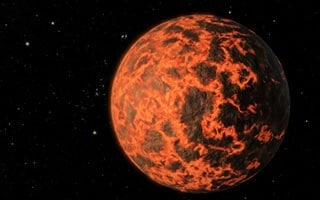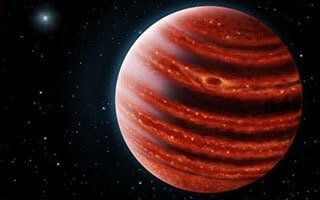How Many Exoplanets are There?
A PRACTICAL GUIDE FOR HABITABLE PLANETS
- Last Updated On:
Introduction
What is an Exoplanet? An exoplanet can be simply defined as any planet orbiting a star other than the Sun.
However, answering the question, “how many exoplanets are there?” is far more difficult and downright impossible to answer, because humankind will probably never be able to observe the entire Universe in order to even begin counting them all.
Table of Content
A more reasonable question to answer is, “how many exoplanets have been discovered”: to date, NASA has determined that there are at least 3,730 exoplanets in existence.
An even easier question to answer is, “why search for exoplanets, anyway?”
Well, when you take in to account the possibly infinite number of exoplanets out there, it would be downright prosperous to assume that none of them harbour other forms of life; humankind could learn so many beneficial things from other living beings, or our species might even be able to teach other forms of intelligent life a thing or two ourselves.
That being said, writing an exoplanet names list and building a habitable exoplanets catalog could be even more vital to humanity and to all other living things on Earth.
After reading the information to follow, it will become clear that the conditions which make life as we know it possible are extremely rare, and these conditions can change in an instant. Aside from the dangers of asteroids, deadly solar activity, and magnetosphere depletion, humankind could push itself to the brink of extinction if human-induced climate change eventually crosses the line in to runaway greenhouse effect territory.
Even if the human species manages to dodge all these catastrophic events, the life of the Sun is finite; if humankind is still around when the Sun can no longer support life on Earth, experts may need to scrutinize the 10 most habitable planets within reach and choose at least one of them to start launching humans toward—just to save the human race from extinction.
On the exoplanets list NASA, 3 types of exoplanets can be found, and Forbes’s Ethan Siegal does an excellent job of describing them:

1. TERRAN WORLDS
These are worlds akin to the rocky worlds in our Solar System. They may have oceans, ices, and/or atmospheres, but don’t have a hydrogen/helium envelope around them.

2. NEPTUNIAN WORLDS
These are planets akin to Saturn, Uranus and Neptune, and are dominated by a large atmosphere of hydrogen, helium, and other atoms/molecules that are easily boiled-off. They may have rocky interiors, but they obey a different mass/radius relationship than the Terran worlds.

3. JOVIAN WORLDS
Akin to Jupiter, these worlds are so massive that they begin to compress on the inside; as you add more mass, their radius shrinks. This effect, of gravitational self-compression, is why Jupiter is only about 20% larger than Saturn, but is three times as massive.
WHAT IS THE MOST HABITABLE EXOPLANET?
With the seemingly infinite number of variables and expert opinions out there, you’ll just have to keep reading the list of possibilities below and decide for yourself. But don’t worry: this article is proof that sometimes attempting to answer extremely difficult questions is more enjoyable than you could ever imagine!
P51 PEGASI B
The Atlantic’s Marina Koren describes 51 Pegasi b as “The Planet That Took Us Beyond the Solar System” it is was the first of the exoplanets discoveredapproximately 50 light-years from Earth. How do you find exoplanets? In October 1995, Swiss astrophysicists Michel Mayor and Didier Queloz made the discovery in the constellation Pegasus by utilizing a technique referred to as the radial-velocity method.
How are exoplanets discovered with this technique? A planet orbiting a star often wobbles when its gravity interacts with that of the star itself, and this motion results in a shift of the star’s light. These shifts in light can reveal the mass of a planet and the period of its orbit; Pegasi b was found to be approximately 50% the mass of Jupiter and its orbital period was determined to be four days. This meant that the exoplanets list was bound to be much more extensive than previously thought, because it wasn’t previously known that a significant number of planets orbited this close to stars.
What’s more, the discovery led to the realization of the transit method of detecting exoplanets, which is similar to the radial-velocity technique because it measures changes in the brightness of light as a planet passes in front of a star. Since more light is blocked by a planet the closer it is to a star, the brightness of the star is dimmed significantly more than it would if the planet was farther away from it, making it considerably easier for telescopes to detect. More fascinating yet, the Very Large Telescope in Chile has revealed that traces of water exist in the atmospheres of kinds of exoplanets like 51 Pegasi b—and water is essential to all life as we know it.
TRAPPIST 1
Research in the journal Astronomy and Astrophysics utilizes telescope observations in order to calculate densities of exoplanets, and it reveals that TRAPPIST 1 planets are predominantly rocky. However, the study also reveals that some of these planets contain 5% water—which is about 250 times more water than Earth’s surface harbours! However, the former water could very well be in the form of atmospheric vapor, or it could be ice water on planets far away from a sun.
The Hubble Telescope indicates that TRAPPIST-1 planets b, c, d, e, and f do not have hydrogen-rich atmospheres which would make them unlikely candidates in the hunt for life on another planet, so at least some hope remains. When NASA’s James Webb Space Telescope is launched in 2019, it should be able to detect heavier gases like carbon dioxide, methane, water, and oxygen, which should shed even more light on whether or not life on other planets such as these is likely. If these turn out to be habitable exoplanets, perhaps more fitting exoplanet names will need to be considered.
GLIESE 667 CC
Planet Quest’s Pat Brennan points out that Kepler might not be the telescope that ends up discovering the first life-bearing exoplanet after all. Super Earth Gliese 667Cc by the European Southern Observatory’s telescope in Chile in 2011; the planet is a mere 22 light-years from Earth, and its mass is just 4.5 times greater than Earth’s. However, Gliese 667 Cc may not be one of the planets I need of new habitable exoplanet names because it orbits a red dwarf so closely that it likely endures severe flares which probably erupt from the star’s surface frequently.
Yet, Gliese 667Cc receives about 90% of the energy from its star as Earth does from the Sun, so there is at least a small chance that life could exist there if the atmosphere is similar to Earth’s as well. Of course, Gliese 667 Cc could very well be a gas planet, and this would all but make it impossible for it to be placed in the category of planets outside our solar system that can support life as we know it. Finally, powerful magnetic fluxes which may result in 40% decreases in the energy that reaches the planet make it very difficult to consider Gliese 667 Cc habitable exoplanets to be a realistic possibility.
KEPLER 186F
Space.com’s Mike Wall highlights how difficult it is to identify characteristics of exoplanets such as Kepler-186f, which are approximately 492 light-years away Earth. Martin Still is the program scientist for NASA’s Transiting Exoplanet Survey Satellite (TESS), and he is the source of Wall’s disheartening—yet accurate—information:
“Because Kepler-186f and the majority of Kepler-discovered planets are so distant, it is currently impossible to detect their atmospheres—if they exist at all—or characterize their atmospheric properties. . . . Consequently, we have limited knowledge about what these distant worlds are really like, but these surface visualizations allow us to imagine some of the possibilities. . . . Current and future NASA missions, including TESS and the James Webb Space Telescope, will find the nearest exoplanets to our solar system and characterize their atmospheres, bridging the gap between speculation and what’s really out there.”
Even though it will likely be many years before this technology will reveal the desired insights, it will be well worth the wait if the evidence shows that exoplanets like Kepler 186f have characteristics which lend themselves to life after all.
KEPLER 442B
The Guardian’s Ian Sample focuses on Kepler-442b, which is even farther away from Earth at about 1,100 light years away. This exoplanet is only approximately 33% larger than Earth, but it is subject to around 66% more sunlight. However, according to a study in The Astrophysical Journal, it does have about a 60% chance of being a rocky planet, so Kepler-442 does have some hope of harbouring life. What’s more, Kepler 438b and 442b are thought to experience temperatures of around 60 degrees Celsius and zero degrees Celsius, which would also be relatively hospital to at least some forms of life as we know it.
Interestingly, a Harvard-Smithsonian team utilized the Blender computer program to verify that these planets are in fact real; sometimes false sightings occur when stars eclipse each other, even if they are a considerable distance away from each other. It’s also promising to note that a co-author of the research named David Kipping argues that Kepler 438b and 442b are “as close to Earth analogues as we’re going to find in the Kepler data.”
KEPLER 442B HABITABLE EXOPLANETS
Space.com’s Kasandra Brabaw underscores Kepler 442b as one of 20 Earth-like planets discovered by Kepler. These 20 rocky exoplanets are all located within habitable zones of stars similar to the Sun, so it stands to reason that liquid water could be present.
Stephen Kane and a team from San Francisco State University scrutinized an exoplanet map of 216 Kepler planets located in probable habitable zones, and the characteristics of exoplanets sizes similar to that of Kepler 442b were found to be the strongest candidates when searching for proof of life on other planets.
However, it’s important to note that not all of the top-20 candidates have actually been confirmed as being actual planets: only Kepler 186f, Kepler 62f, Kepler 283c, Kepler 296f, and Kepler-442b were conclusive.
PROXIMA CENTAURI B
NASA’s Lina Tran puts this at the top of the list when speaking of interesting exoplanets which are Earth-size, relatively close to our solar system, in a habitable zone. Yet, Proxima Centauri b would likely struggle to hold-on to its atmosphere, and this would result in severe stellar radiation which would make habitability all but impossible.
There are also other exoplanet facts that are problematic when making a case for life on Proxima Centauri b; it hasn’t been observed transiting its star, so normal techniques for learning details about its atmosphere cannot be utilized.
Models can be used to help comprehend whether or not these types of exoplanets are habitable, which is precisely what an exoplanets NASA study has done. Research published in The Astrophysical Journal Letters on July 24, 2017 indicates that an Earth-like atmosphere would not endure so close to a red dwarf, so odds are that Proxima Centauri’s climate would not be regulated: surface pressure would not be ideal for water, space weather on the surface would be overwhelming, and the chemical building blocks of life would find at all but impossible to persist for long periods of time.
More specifically, exoplanet NASA models demonstrate that Proxima Centauri’s radiation would cause a habitable atmosphere to be lost approximately 10,000 times more quickly than it would be on Earth.
WOLF 1061C
Space.com’s Elizabeth Howell points to Wolf 1061c as being one of the closest habitable planets to Earth, but it too probably has a fluctuating climate. This exoplanet is located in what is thought to be a habitable zone, but, as has been discussed, it takes a lot more than just this to prove that life on exoplanets is likely present.
Wolf 1061c is merely 14 light-years from Earth’s Sun, but it is also located near the inner edge of its star’s habitable zone like Venus is in Earth’s solar system. San Francisco State University’s Stephen Kane underscores this point when concluding that this exoplanet is “close enough to the star where it’s looking suspiciously like a runaway greenhouse,” would virtually eliminate any chance of life being present.
KEPLER 452B
NASA’s Michele Johnson focuses on Kepler 452b, which was an exoplanet discovery involving G2-type star similar to the Sun. Kepler-452b has a dimeter about 60% greater than that of Earth, and it is thought to be a rocky planet although this hasn’t been confirmed. It’s interesting to note that even though this exoplanet is larger than Earth, its orbit of 385 days is merely 5% longer. Kepler 452 is only 5% farther from Kepler 452b than Earth is from the Sun, but it is around 6 billion years old while the Sun is only about 4.5 billion years old.
Remarkably, both stars have are approximately the same temperature, but Kepler 452 is about 20% brighter and 10% larger. These characteristics are not enough to put Kepler 452b on the list of habitable planets, but since there currently no exoplanets known to be habitable for sure, at least some hope must remain.
CONCLUSION
So, how many planets are there in the entire universe? Again, it’s likely that humankind will never be able to confidently answer a question as broad as, “how many exoplanets are there?” However, more narrow questions like, “how many exoplanets are there as of 2018” can be accurately answered, as they have been at the beginning of this article. It’s vital to keep in mind that even easier questions to answer such as, “how many exoplanets have been discovered in 2018” are just as important to contemplate in order to glean insight and perspective.
There have already been over 160 discovered this year alone as per the IPAC Exoplanet Archive, so it’s just important to consider all the planets that have yet to be discovered—which surely will be discovered—when trying to determine the answers to questions like, “how many Earths are there in this world?” Just picturing the long lists of exoplanets discovered by year compels one to conclude that there are likely an infinite number Earth-like planets out there, and likely an infinite number of human-like species as well.
SUBSCRIBE TO OUR WEEKLY NEWSLETTER

